In This Issue
- DDP’s Urgent Message
- Expanded Vision for IH
- EU Datacloud Awards
- Report from the CEO
- Consumers Warming
- IoT Comes to WDC
- CES Roundup: IoT
- Verizon’s Car Module
- FTC New Year Warning
- Obama Cybersecurity
- CES: IoT Is Buzzword
- GOP Neutrality Shift?
- Thune Calls Hearing
- OTT Commenters
- IoT Rival Consortia
- IoT May Arrive Sooner
- Coming DCIA Events
DDP’s Urgent Congressional Message
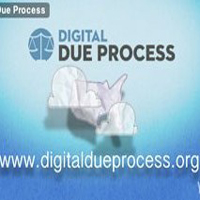 The Digital Due Process (DDP) coalition, in which the Distributed Computing Industry Association (DCIA)participates, plans to send an urgent message to the US Congress this week regarding timely passage of a much-needed update to the 1986 Electronic Communications Privacy Act (ECPA).
The Digital Due Process (DDP) coalition, in which the Distributed Computing Industry Association (DCIA)participates, plans to send an urgent message to the US Congress this week regarding timely passage of a much-needed update to the 1986 Electronic Communications Privacy Act (ECPA).
There is an enormous and growing need on many fronts to provide stronger protection for sensitive personal and proprietary communications stored in the cloud. This includes protection from governmental bodies acting without due process.
Currently, the American judicial system reflects widespread misunderstandings in this area, causing confusion among law enforcement agencies and resulting in inconsistent court decisions.
Internet service providers (ISPs), cloud solutions providers, data center operators, enterprise customers, and hundreds of millions of consumers will all benefit from ECPA reform.
Providing clarity in the law, creating a more competitive marketplace, and reducing uncertainty among cloud services end-users are clearly corrective measures that will help foster continuing industry advancement.
The DDP communications will outline a major step, which already has garnered substantial bi-partisan support — at an unprecedented level for technology privacy matters — that can be taken now to achieve a key element of ECPA reform.
Next week’s edition of the DCIA Weekly Newsletter will include details as well as recommendations for what DCINFO readers can do to help.
An Expanded Vision for the Intelligent Home
Excerpted from DCINFO Special Report by Mark Norton
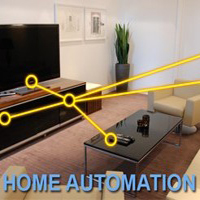 The idea of using electronics to automate tasks around the home has been around since the 1960s. All sorts of interesting devices have been created to control heat and air conditioning, provide security, and all manner of other functions.
The idea of using electronics to automate tasks around the home has been around since the 1960s. All sorts of interesting devices have been created to control heat and air conditioning, provide security, and all manner of other functions.
Along the way, many different kinds of technologies have been developed from X10 through Z-Wave, Zigbee, and now BlueTooth LE.
The recent CES demonstrated that Home Automation and the Internet of Things (IoT) are really starting to take off. The market for these kinds of devices is expected to explode over the next five years, according to most industry sources.
For the most part this will be scatter-shot approach at best. While some vendors are working hard to cover the various aspects of home automation and simplify installation and use, a bigger vision might serve to provide a better business strategy. This vision and how we might reach it is described here.
Before getting into details, we need to first ask, “What is the point of all this?” The answer is simple: Home Automation and the IoT should make home living easier, more comfortable, and more efficient.
Some inherent challenges could be resolved by industry standards or cooperative approaches, such as those promoted by the DCIA, but will ultimately be decided by the market itself. Read more…
EU Datacloud Awards Updated for 2015
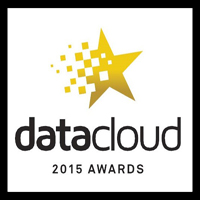 The Distributed Computing Industry Association’s (DCIA) international partner BroadGroup has implemented a number of exciting changes in the Datacloud Awards, now in their eighth year, to keep pace with fast moving industry developments and to sustain the integrity and strategic value of these awards as the only pan-European recognition of demonstrable leadership in areas of data center and cloud.
The Distributed Computing Industry Association’s (DCIA) international partner BroadGroup has implemented a number of exciting changes in the Datacloud Awards, now in their eighth year, to keep pace with fast moving industry developments and to sustain the integrity and strategic value of these awards as the only pan-European recognition of demonstrable leadership in areas of data center and cloud.
Commenting on the new awards structure, Gerd Simon, Chairman of the Judges Panel said, “An objective of all awards is to recognize the best. In setting the bar higher yet again, these awards will provide new goals for the extraordinary talents across Europe operating and engaging in data center and cloud.”
Heading the list of changes are two new Awards — the European Award for Data Center Industry Leadership and the European Cloud Award for Industry Leadership.
Another innovation recognizes the important role of marketing in the industry with two awards for Marketer of the Year — one each for data center and cloud — the very first in this category.
The awards also bring much-needed recognition to enterprise end-users — the infrastructure and IT delivery executives managing Europe’s mission critical facilities.
The full list of awards for 2015 is available here. Award nominations may be made here.
Report from CEO Marty Lafferty
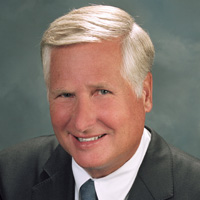 Post-production of the DCIA’s Internet of Things (IoT) Marathon is well underway with the goal of completing all aspects of the process in time for the major industry webcast to premiere on February 1st.
Post-production of the DCIA’s Internet of Things (IoT) Marathon is well underway with the goal of completing all aspects of the process in time for the major industry webcast to premiere on February 1st.
The DCIA’s IoT Marathon will cover five vertical categories — smart objects for fitness and healthcare; programmable homes and energy management; media entertainment and social networking solutions; geolocation services and vehicular automation; and retail, public, space, and manufacturing environments; as well as an exploration of key hurdles to be overcome for IoT to reach its full potential — power consumption, cybersecurity, and interoperability.
During the 2015 International CES, IoT demonstrations and interviews were recorded daily in our HD-video production studio at Sands Expo Center while our remote crews captured additional perspectives in exhibit suites, booths, and meeting rooms throughout CES.
Last week, we saluted principal segment contributors Consumer Electronics Association (CEA) Chief Economist & Senior Director of ResearchShawn Dubravac, State of Israel Deputy Economic Minister Oded Grinstein, LV Sands Corp. Global Chief Information & Innovation Officer (CIIO)Les Ottolenghi, IBM Director of Global Consumer Electronics Scott Burnett, Internet of Things Industrial Sector Lead Ted Connell, and Internet of Things Foundation Product Manager Neil Postlethwaite.
This week, we’re pleased to recognize additional standouts among operating company participants — Akamai’s Kris Alexander, Arrayent’s Shane Dyer, DigiCert’s Scott Rea, Encoding.com’s Jeff Malkin, e-radio’s Duff Roman, FitNet’s Jennifer Miller, GreenIQ’s Odi Dahan, Greenwave Systems’ Jim Hunter, horn’s Lawrence Levine, Hoorah Mobile’s Mike Russell, Icon Health & Fitness’ Colleen Logan, Infor’s Kurt Smith, Irdeto’sStuart Rosove, Kwaai Oak’s Bill Worzel, Link’s Luke Malpass, Lynxfit’s Noble Ackerson, MediaTuners’ David Frerichs, Quantum Materials’ Steve Squires, SwitchBee’s Aharon Grossman, Verizon Telematics’ Tom Taylor, VirtualQube’s Karl Burns, Virtual Rendezvous’ Charles Perkins, Xensr’sDavid Troub, and 911CyberUS’ Frank Nein — among many others.
Major segments will also feature ARM Director of Segment Marketing Jeff Chu’s guided tour of the company’s exhibit area; ConnectSafely Co-Director Larry Magid’s and Connected Vehicle President Scott McCormick’s viewpoints from participating associations; and Gracenote Co-Founder & Chief Strategy Officer Ty Roberts’ presentation of its IoT offerings at Gracenote’s Lounge.
We also very much appreciate the contributions of industry analysts, observers, and professional services firms including ABI Research’s Dan Kara and Sam Rosen, Altman & Vilandrie’s Stefan Bewley, AppState’s Frank Aycock, Techknowledge Strategies’ Mike Feibus, Entrepreneurs Mingle’s Sanaith Devulapalli, McKool Smith’s Larry Hadley, Royal Technology Advisors’ Linda Senigaglia, and Strategy Analytics’ Mike Goodman.
In-studio demonstrations will include Linea headsets by Caeden President & CEO Nora Levinson; Cyclops by Genos Corporation’s Co-Founder & CTO Mike West; SmartSoles by GTX Corp. Founder, Chairman & CEO Patrick Bertagna; Bubbles for touring, shopping, and enhancing live events by Interface Foundry CEO & Creative Technologist Rachel Law; and Sentris by Sentri Co-Founder, Strategy & Marketing Wendy Qi.
Share wisely, and take care.
Consumers Still Warming to Smart Home Idea
Excerpted from Washington Post Report by Mohana Ravindranath
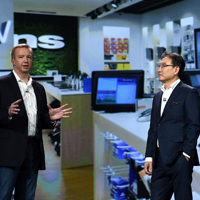 At the International Consumer Electronics Show (CES) in Las Vegas, NV last week, LG unveiled a series of household appliances that can receive, interpret, and send texts: a washing machine that, when asked, reports how much time is left in a cycle; or a refrigerator that alerts the owner when food is about to expire.
At the International Consumer Electronics Show (CES) in Las Vegas, NV last week, LG unveiled a series of household appliances that can receive, interpret, and send texts: a washing machine that, when asked, reports how much time is left in a cycle; or a refrigerator that alerts the owner when food is about to expire.
These are among several recent product announcements surrounding the “smart home” — a futuristic vision of households constantly monitoring their own activity, alerting the owner’s smartphone when windows are opened, electricity left on, or clothes are done drying.
In the past year, start-ups, technology giants, and telecommunications companies have made their own smart-home bids, according to Gartner analyst Fernando Elizalde. But compared with the rapid development of new products, consumer adoption has been slow as people gradually become more comfortable with the smart home, he added.
That hasn’t stopped companies from jumping in.
At CES, Lowe’s promoted Iris, a network that lets customers manage the data generated by disparate WiFi-enabled devices, such as thermostats or appliances. Whirlpool showed off a washing machine hooked up to an app that lets people donate to a charity — such as Habitat for Humanity — every time they do laundry.
This past February, Google acquired Nest — a start-up selling thermostats that can adjust to a user’s preferences — for $3.2 billion. In November, French telecommunications company Orange announced Homelive, a solution letting customers manage their appliances remotely. Read more…
IoT comes to DC: DelBene & Issa’s Congressional Caucus
Excerpted from GeekWire Report by John Cook
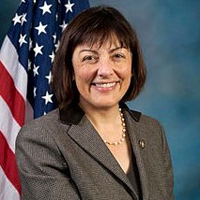 At the Consumer Electronics Show (CES) in Las Vegas, NV last week, nearly everywhere you turned people were talking about the Internet of Things or IoT.
At the Consumer Electronics Show (CES) in Las Vegas, NV last week, nearly everywhere you turned people were talking about the Internet of Things or IoT.
Now, the idea behind these connected devices — everything from smart cars to smart washing machines — is making its way to DC.
Congresswoman Suzan DelBene (D-WA) and Congressman Darrell Issa (R-CA) today announced the formation of the “Congressional Caucus on the Internet of Things (IoT).”
“As someone with a long career in the technology industry and as an entrepreneur, I know firsthand how quickly technologies have developed to become critical to our daily lives,” said DelBene.
“Policymakers will need to be engaged and educated on how we can best protect consumers while also enabling these new technologies to thrive. It’s important that our laws keep up with technology and I look forward to co-chairing the IoT caucus.”
DelBene is a former Microsoft executive who also previously worked at Drugstore.com and Nimble Technology.
The number of connected devices is accelerating, with industry analysts recently predicting that there will be 50 billion connected devices on the planet by 2020. (That’s enough for six per person).
DelBene and Issa say that the the IoT Caucus will focus on educating members. Read more…
CES Roundup: Ford, Toyota, Internet of Things
Excerpted from Environmental Leader Report
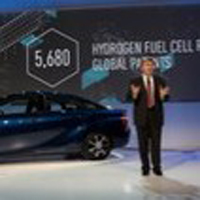 The 2015 International CES wrapped up on Friday, with Ford, Toyota, and other companies making major announcements about how technology innovation will advance efficiency and sustainability.
The 2015 International CES wrapped up on Friday, with Ford, Toyota, and other companies making major announcements about how technology innovation will advance efficiency and sustainability.
Mark Fields, Ford President & CEO, announced Ford’s new Smart Mobility plan in his keynote, which he says will solve today’s global transportation challenges. The plan will use connectivity, mobility, and big data to operate 25 experiments around the world.
Fields also unveiled Ford’s future plans to develop the next-generation of fully autonomous cars. The company is currently testing Fusion Hybrid, a fully autonomous car that uses existing technology from Ford’s semi-autonomous cars and includes LiDAR sensors to sense objects and advanced algorithms to help predict vehicle and pedestrian traffic.
Also at CES, Toyota announced it is making available thousands of hydrogen fuel-cell patents royalty free.
The event saw the largest-ever showcase of products, services and technologies that make up the Internet of Things (IoT), with more than 900 exhibitors sharing innovations that harness the power of the network to connect everyday devices, according to the Consumer Electronics Association (CEA)
Some of the CES exhibitors showcasing IoT technologies include Bosch, Lowe’s, Konnect Labs, iDevices, Muzzley and Blinksight.
Verizon Unveils OnStar-Like Car Plug-In
Excerpted from GigaOM Report by Kevin Fitchard
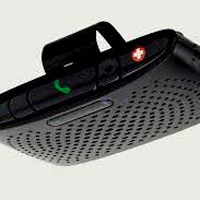 Verizon unveiled its own take on the after-market connected car module Tuesday at the North American International Auto Show in Detroit, MI. Called Verizon Vehicle, the technology is similar to other plug-in dashboard gadgets like Automatic, Mojio and Zubie, but Verizon isn’t aiming at the early tech adopter set. Instead, Verizon Vehicle clearly targets the roadside assistance and telematics market pioneered by GM’s OnStar.
Verizon unveiled its own take on the after-market connected car module Tuesday at the North American International Auto Show in Detroit, MI. Called Verizon Vehicle, the technology is similar to other plug-in dashboard gadgets like Automatic, Mojio and Zubie, but Verizon isn’t aiming at the early tech adopter set. Instead, Verizon Vehicle clearly targets the roadside assistance and telematics market pioneered by GM’s OnStar.
Verizon Vehicle has two components: a module that plugs into the on-board diagnostic port of any vehicle made in the last 18 years, and a Bluetooth microphone and speaker that clips to your car’s visor. The module tracks your location via GPS and maintains a constant connection to Verizon’s cellular network. The visor device connects to the plug-in module wireless and allows you to dial up and talk to a Verizon Vehicle operator or mechanic with a touch of a button.
The services offered are right out of OnStar’s playbook: vehicle location, accident alerts and a panic button for emergencies that puts the driver in contact with a Verizon Vehicle dispatcher. There’s also a mechanics hotline that connects you to a live professional grease monkey to help diagnose any problems with your vehicle.
Like other plug-in modules, Verizon Vehicle also taps into the car’s control access network, which gives it access to all kinds of information in the automobile’s internal computer. Through a smartphone app or through text or email alerts, Verizon Vehicle will be able to detail the exact problem your car is experiencing when that check engine light starts flashing. The app and alert system will also help with preventative maintenance, telling you when the car’s tires need to be rotated or when you’re due for an oil change. Read more…
FTC Rings in New Year with IoT Warning
Excerpted from Global Regulatory Enforcement Law Blog by Frederick Lah and Sulina Gabale
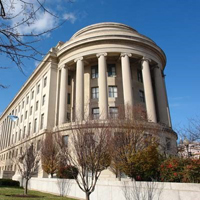 While hundreds of tech companies are racing to develop the newest in Internet-connected smart devices, Federal Trade Commission (FTC) Chairwoman Edith Ramirez is sending a reminder to those companies of their responsibilities to consumers. At the 2015 Consumer Electronics Show held in Las Vegas, NV January 6th-9th, Chairwoman Ramirez highlighted some best practices to address the vast array of consumer privacy risks posed by the Internet of Things (IoT).
While hundreds of tech companies are racing to develop the newest in Internet-connected smart devices, Federal Trade Commission (FTC) Chairwoman Edith Ramirez is sending a reminder to those companies of their responsibilities to consumers. At the 2015 Consumer Electronics Show held in Las Vegas, NV January 6th-9th, Chairwoman Ramirez highlighted some best practices to address the vast array of consumer privacy risks posed by the Internet of Things (IoT).
The IoT refers to the growing ability of everyday devices to monitor and communicate information through the Internet. For example, mobile phones are used for far more purposes than originally intended by Mr. Alexander Graham Bell. They have become integral to our daily lives: waking us up in the morning, feeding us the news on our commute to work, and tracking our sleep patterns at night via Bluetooth technology.
However, with the widespread use of innovative smart technology comes a swath of potential privacy concerns for consumers and companies alike.
In her speech, Chairwoman Ramirez warned that the data collected from these smart devices “will present a deeply personal and startlingly complete picture of each of us—one that includes details about our financial circumstances, our health, our religious preferences, and our family and friends.” Read more…
Obama Calls for New Laws to Bolster Cybersecurity
Excerpted from NY Times Report by Julie Davis
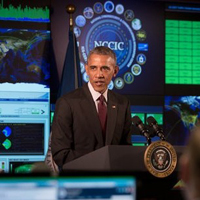 President Barack Obama on Tuesday called on Congress to pass broad legislation to bolster cybersecurity across the United States government and private industry, working to capitalize on concern about recent high-profile computer breaches to counter an escalating threat.
President Barack Obama on Tuesday called on Congress to pass broad legislation to bolster cybersecurity across the United States government and private industry, working to capitalize on concern about recent high-profile computer breaches to counter an escalating threat.
President Obama’s proposal, which would be subject to approval by Congress, would increase the prosecution of crimes conducted through computer networks and toughen penalties for them.
It would also shield from liability companies that share information with the government about computer threats, a key point of contention that has hamstrung the president’s past efforts to push through cybersecurity improvements.
“Neither government nor the private sector can defend the nation alone,” the President said Tuesday afternoon during a visit to the National Cybersecurity and Communications Integration Center (NCCIC) in Arlington, VA. “It’s going to have to be a shared mission — government and industry working hand in hand.”
The plan is one in a series of technology- and privacy-related proposals President Obama is unveiling in advance of his State of the Union address on Tuesday. The President will travel to Iowa on Wednesday to announce steps to expand access to high-speed broadband Internet access to underserved areas.
The new cybersecurity effort came a day after President Obama called for legislation to force American companies to be more forthcoming when credit card data and other consumer information are lost. Read more…
2015 CES: IoT Is Buzzword despite Security Concerns
Excerpted from TechTimes Report by Christian de Looper
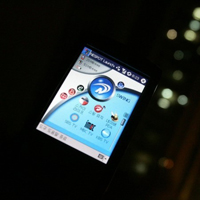 The Consumer Electronics Show (CES) this year saw the announcement of a number of great products, from smartphones to TVs. But the real winner of the show wasn’t either of those things — it was the Internet of Things (IoT).
The Consumer Electronics Show (CES) this year saw the announcement of a number of great products, from smartphones to TVs. But the real winner of the show wasn’t either of those things — it was the Internet of Things (IoT).
Many, however, are a little concerned about the future of the IoT, that world of interconnected devices that can communicate with one another, saying that it introduces new avenues for hackers to steal our personal information. A number of companies, though, are working toward making IoT devices safer.
“New things are scary, without a doubt,” said Keith Shank, Director of Ericsson North America’s Advanced Technology Labs. “We’re working with other companies to create a truly secure back-end cloud concept. The cloud isn’t just about storage, it’s about making secure connections for everyone and everything around you. How do you find when people have breached it? How do you find what data they’ve breached?”
“How do you keep that breach from happening again? We have to have the security, we have to have the knowledge of how to fix things. For people to trust new technology, they need to be able to know it’s safe and secure for their use.”
Samsung is one company that has been making a big push for IoT devices. Samsung’s idea is that almost every device that a user has as well as many products that aren’t electronic, such as chairs, will be connected to each other and able to communicate. Within the home, this means that a user will be able to get home and have the music that they were listening to through their headphones automatically play through their speakers when they get inside. Read more…
A GOP Shift on Net Neutrality?
Excerpted from Variety Report by Ted Johnson
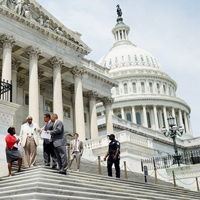 Key US Congressional Republicans unveiled a Net Neutrality bill on Friday that would prohibit Internet service providers (ISPs) from blocking or throttling content, or from prioritizing web traffic from those sites that pay for speedier access to the consumer.
Key US Congressional Republicans unveiled a Net Neutrality bill on Friday that would prohibit Internet service providers (ISPs) from blocking or throttling content, or from prioritizing web traffic from those sites that pay for speedier access to the consumer.
The draft legislation also would apply to both wired and wireless providers.
But the bill would also prevent the Federal Communications Commission (FCC) from reclassifying broadband as a Title II telecommunications service, a regulatory maneuver designed to give the agency a more solid legal footing through which to issue strong net neutrality rules. FCC chairman Tom Wheeler has hinted that he may propose reclassification before the commission votes on new rules on February 26th.
The proposed GOP bill would head off such an approach and put limits on the FCC’s authority over Internet service.
Yet the legislation, from Congressmen Fred Upton (R-MI) and Greg Walden (R-OR), and Senator John Thune (R-SD), is notable because in the past, Congressional Republicans have expressed doubts about the need for Net Neutrality rules at all. That some key Republicans are now backing some key principles long favored by Net Neutrality advocates marks a change in the nature of the debate.
Their legislation would ban blocking and throttling of content, as well as paid prioritization. Read more…
Thune Calls Network Neutrality Hearing
Excerpted from Broadcasting & Cable Report by John Eggerton
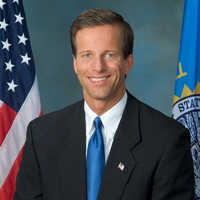 It will be all Network Neutrality all the time Wednesday, with hearings on both the House and Senate side on bicameral—and perhaps bipartisan—legislation that would attempt to head off Title II reclassification while preventing online discrimination, blocking, and ISP/edge-directed paid prioritization.
It will be all Network Neutrality all the time Wednesday, with hearings on both the House and Senate side on bicameral—and perhaps bipartisan—legislation that would attempt to head off Title II reclassification while preventing online discrimination, blocking, and ISP/edge-directed paid prioritization.
In addition to the House Energy & Commerce Committee hearing in the morning, the Senate Commerce Committee is holding one in the afternoon. Not a surprise, since the draft legislation in the works was announced jointly by Fred Upton (R-MI), Chairman of the parent Energy & Commerce Committee, and John Thune (R-SD), Chairman of Senate Commerce.
Senator Thune said the hearing would feature non-government witnesses talking about the FCC’s authority and Congress’ options for updating laws. The committee did not say who those witnesses would be, but it sounds like lawyers and legal scholars would be on the list.
Thune also elaborated the 11 principles he thinks should be in bipartisan rules for the “Internet Age” and they sound much like what Democrats, including the President and FCC Chairman Tom Wheeler, have been calling for.
They are: “Prohibit blocking, prohibit throttling, prohibit paid prioritization, require transparency, apply rules to both wireline and wireless, allow for reasonable network management, allow for specialized services, protect consumer choice, classify broadband Internet access as an information service under the Communications Act. Read more…
OTT Commenters: Start Your Search Engines
Excerpted from Multichannel News Report by John Eggerton
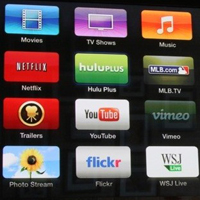 The Federal Register Thursday published the Federal Communications Commission’s (FCC) proposal to define some linear over-the-top (OTT) video distributors as multichannel video programming distributors (MVPDs) for the purpose of nondiscriminatory access to programming, which triggers the official comment cycle, with initial comments due February 17th and reply comments due March 2nd.
The Federal Register Thursday published the Federal Communications Commission’s (FCC) proposal to define some linear over-the-top (OTT) video distributors as multichannel video programming distributors (MVPDs) for the purpose of nondiscriminatory access to programming, which triggers the official comment cycle, with initial comments due February 17th and reply comments due March 2nd.
There were actually already a trio of comments in the docket at press time, one from a serial filer who has flooded the FCC with filings in multiple dockets, one from an individual and one from a company concerned about the impact of potential new obligations on white spaces devices for rural broadband.
Back in December, the FCC voted to “modernize our interpretation of the term MVPD by including within its scope services that make available for purchase, by subscribers or customers, multiple linear streams of video programming, regardless of the technology used to distribute the programming.”
As B&C/MCN first reported, the item proposes to give linear OVDs nondiscriminatory access to cable-affiliated programming and local TV station broadcasts, regardless of whether or not they have facilities based distribution. Beyond that it tees up lots of questions about how to apply that definition and the ramifications of doing so.
The previous definition of MVPD required it to control the distribution facilities as well as aggregate the programming. Read more…
Internet of Things Spurs Rival Consortia
Excerpted from Wall St. Journal Report by Don Clark
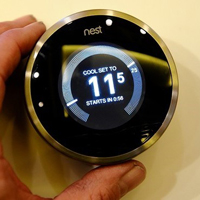 Two prominent groups of companies are developing rival technology standards to help smart devices work together. But they agree on one thing: the Linux Foundation can help.
Two prominent groups of companies are developing rival technology standards to help smart devices work together. But they agree on one thing: the Linux Foundation can help.
The Open Internet Consortium — established last summer with members such as Intel and General Electric — on Wednesday said the San Francisco-based foundation will oversee a project called IoTivity. Its goal is the creation of open-source software that will exploit specifications the consortium is developing.
If that relationship sounds familiar, it is. The AllSeen Alliance—whose members include Qualcomm, Microsoft, andSony — announced in December 2013 that it would rely on the Linux Foundation to help shepherd its open-source code.
Both groups are trying to advance the Internet of Things (IoT), Silicon Valley’s moniker for adding sensing, computing and communications capability to all kinds of hardware purchased by consumers and businesses.
The IoT won’t flourish unless companies cooperate on technology, industry executives say. Devices need to know whether they are communicating with, say, a door lock or a light-bulb, and what kinds of interactions are possible.
Making that possible is the stated goal of both industry groups, whose differences seem to boil down to rules for handling patents and whether they initially stressed technical specifications or software.
The OIC started with the former. The group is writing documents that lay out what devices should do to work together, said Mark Skarpness, who chairs an IoTivity steering group and is an Intel Director of Embedded Software. Read more…
IoT Might Just Arrive Sooner than Expected
Excerpted from The Next Digit Report by Wayne Murphy
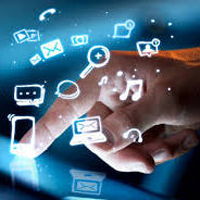 The 2015 CES was on a high as official announcements about the much awaited Internet of Things (IoT) were made. The CEO of Asian tech giant Samsung announced that the IoT will power our homes with smart thermostats and water meters, which in turn will serve many other purposes.
The 2015 CES was on a high as official announcements about the much awaited Internet of Things (IoT) were made. The CEO of Asian tech giant Samsung announced that the IoT will power our homes with smart thermostats and water meters, which in turn will serve many other purposes.
Authorities in the United Kingdom are trying out various things, which ultimately will lead to the efficient implementation of IoT. As it stands currently, most individuals around the globe use smartphones, thus giving an obvious edge to IoT.
It is important that the authorities working on the concept of IoT ensure that the products are genuinely user-friendly. The reason that experts are saying so is because the overall sales figures for electronic goods have fallen by 1%, in spite of the rise in the sales of smartphone and smartwatches.
Many companies have started working on the concept of IoT and are looking forward to producing products, which will help individuals turn their appliances into smart ones.
According to reports, the United Kingdom is working with sensors, which will notify parking lot administrators whether the parking lot is full or there are any vacant spaces.
Similarly, British Gas has also invested in a company called AlertMe, which is working to produce a system similar to a great many such entrants in the US market that will allow users to manage the temperature of rooms from their smartphones. Read more…
Coming Events of Interest
Autonomous Data Center – The CIO’s End Goal — January 21st webinar at 12 noon ET. How do large enterprises organize their migration autonomous data centers? How do CIOs adopt the building blocks needed to achieve this? Join DCIA Cloud Evangelist Michael Elliott for an informative and valuable session.
State of the Net Conference — January 27th in Washington, DC. With unparalleled opportunities to network and engage on key Internet policy issues, this is the largest Internet policy conference in the US and is recognized for its balanced blend of private and public sector participants.
Datacloud South East Asia — April 1st-2nd in Johor, Malaysia. Datacloud South East Asia will assess the energy, scalability, security, architecture, and software challenges confronting operators of data centers and enterprises engaged in or considering transitions to the cloud.
NAB Show — April 11th-16th in Las Vegas, NV. Popular and fresh attractions for 2015 include the Cloud Pavilion (CP) for asset management; Connected Media Live (CML), focusing on the consumer experience; the Drone Pavilion (DP), featuring a fully enclosed “flying cage” for demonstrations; and the New Media Expo (NMX).
Internet of Things Conference — April 15th-17th in San Diego, CA. The IoT Con will focus on how companies are using a variety of technologies, including ZigBee radios, Wi-Fi, and machine-to-machine (M2M)software, to connect things to the Internet, and how they are achieving real business benefits from doing so.
All That Matters — May 20th-23rd in Singapore. Packed with influencers, content creators, platforms and marketers, ATM drives business and global collaboration for decision makers in the entertainment, media, and marketing industries.
CES Asia — May 25th-27th in Shanghai, China. The success of the 2015 International CES builds strong momentum for CES Asia. With strong exhibitor demand for CEA’s inaugural event, the show will be curated with select qualifying companies permitted to exhibit.
Data Center and Cloud Awards — June 2nd in Monaco. Europe’s most prestigious awards for data center and cloud achievements will be announced at an evening ceremony prior to the opening of Europe’s ‘must-attend’ Datacloud Europe conference and exhibition.
Internet of Things World Forum (IoTWF) — October (2015 Dates TBD) in Dubai, UAE. IoTWF is an exclusive event that brings together the best and brightest thinkers, practitioners, and innovators from business, government, and academia to accelerate the market adoption of the Internet of Things.
